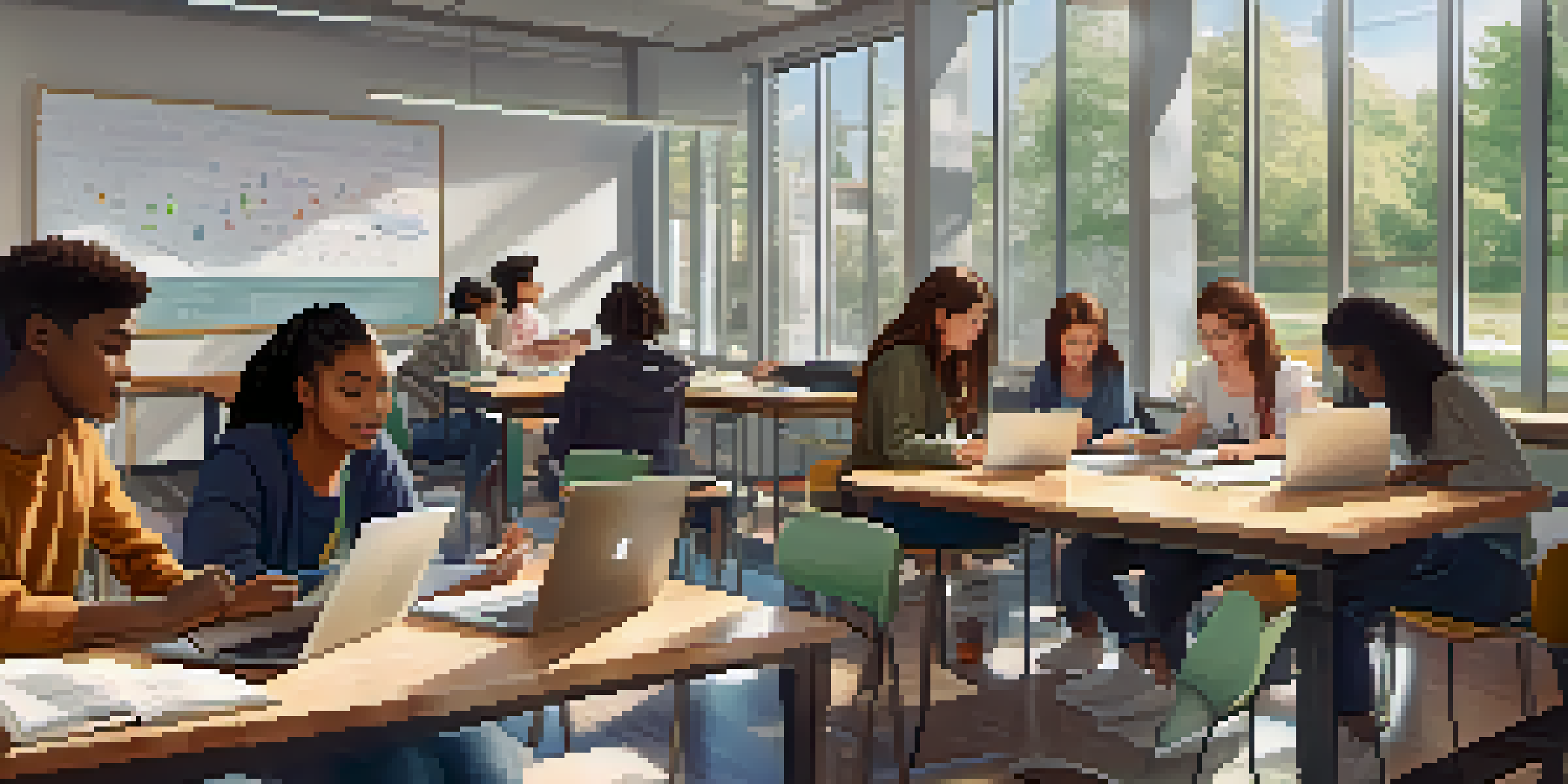The Importance of Soft Skills in Blended Learning

Understanding Blended Learning and Its Components
Blended learning combines traditional face-to-face education with online components, creating a versatile learning experience. This approach allows students to engage with content in various ways, accommodating different learning styles. However, it's not just the delivery method that matters; the success of blended learning hinges on the interaction between students and educators.
Defining Soft Skills and Their Relevance Today
Soft skills are non-technical skills that relate to how we work and interact with others. These include communication, teamwork, problem-solving, and adaptability. In today’s job market, employers increasingly prioritize these skills, as they are essential for collaboration and innovation in any field.
Blended Learning Enhances Engagement
Blended learning fosters student engagement through various interaction methods, accommodating diverse learning styles.
The Impact of Soft Skills on Student Engagement
When students possess strong soft skills, they are better equipped to engage with their peers and instructors. This engagement fosters a sense of community and belonging within a blended learning environment. For instance, students who can communicate effectively are more likely to participate in discussions, leading to richer learning experiences.
Enhancing Collaboration Through Soft Skills
Blended learning often involves group projects, where collaboration is key. Strong soft skills like teamwork and conflict resolution can significantly enhance group dynamics. Students who can navigate differing opinions and work together toward a common goal create a more effective learning environment.
Soft Skills Drive Collaborative Success
Strong soft skills like teamwork and communication significantly enhance collaboration in blended learning environments.
Soft Skills as Tools for Problem-Solving
In blended learning settings, students frequently encounter challenges that require creative problem-solving. Soft skills such as critical thinking and adaptability enable them to approach these challenges with confidence. For example, when faced with technical issues during an online session, students who can think on their feet are more likely to find effective solutions.
Building Resilience in a Blended Learning Context
Resilience is a key soft skill that helps students cope with the ups and downs of their learning journey. In a blended environment, where self-directed learning is common, students may face distractions or setbacks. Those with strong resilience can bounce back from difficulties and stay focused on their educational goals.
Resilience Supports Learning Journeys
Resilience helps students navigate challenges in blended learning, allowing them to stay focused on their educational goals.
The Role of Educators in Fostering Soft Skills
Educators play a crucial role in nurturing soft skills among students. By incorporating collaborative activities and encouraging open dialogue, teachers can create an environment where these skills flourish. Moreover, providing feedback on soft skills can guide students in their personal and professional development.
Conclusion: The Future of Blended Learning and Soft Skills
As blended learning continues to evolve, the importance of soft skills will only grow. These skills not only enhance the learning experience but also prepare students for future career success. By prioritizing soft skills alongside academic knowledge, we can equip learners to thrive in diverse environments.